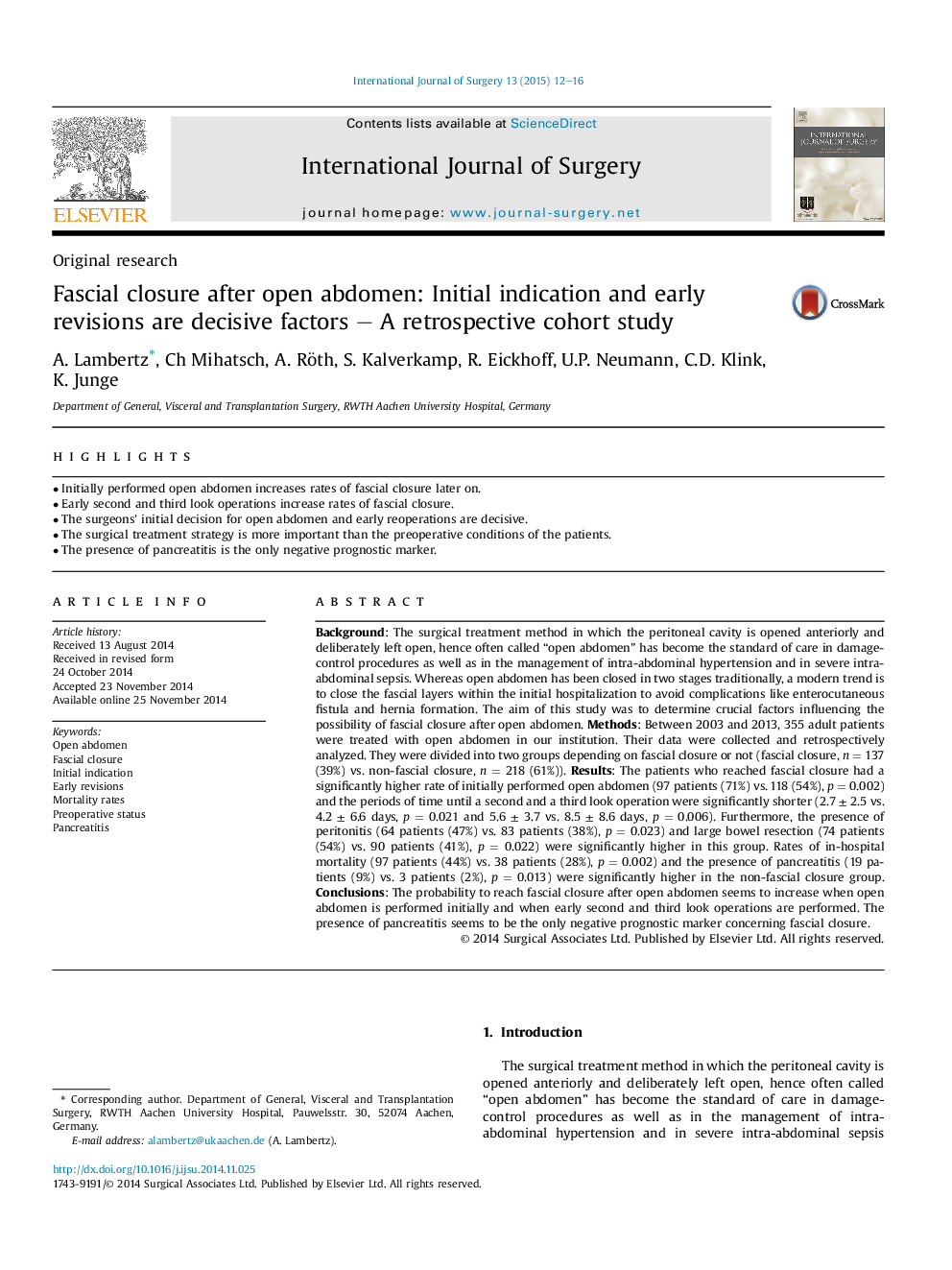| Article ID | Journal | Published Year | Pages | File Type |
|---|---|---|---|---|
| 6251532 | International Journal of Surgery | 2015 | 5 Pages |
â¢Initially performed open abdomen increases rates of fascial closure later on.â¢Early second and third look operations increase rates of fascial closure.â¢The surgeons' initial decision for open abdomen and early reoperations are decisive.â¢The surgical treatment strategy is more important than the preoperative conditions of the patients.â¢The presence of pancreatitis is the only negative prognostic marker.
Background: The surgical treatment method in which the peritoneal cavity is opened anteriorly and deliberately left open, hence often called “open abdomen” has become the standard of care in damage-control procedures as well as in the management of intra-abdominal hypertension and in severe intra-abdominal sepsis. Whereas open abdomen has been closed in two stages traditionally, a modern trend is to close the fascial layers within the initial hospitalization to avoid complications like enterocutaneous fistula and hernia formation. The aim of this study was to determine crucial factors influencing the possibility of fascial closure after open abdomen. Methods: Between 2003 and 2013, 355 adult patients were treated with open abdomen in our institution. Their data were collected and retrospectively analyzed. They were divided into two groups depending on fascial closure or not (fascial closure, n = 137 (39%) vs. non-fascial closure, n = 218 (61%)). Results: The patients who reached fascial closure had a significantly higher rate of initially performed open abdomen (97 patients (71%) vs. 118 (54%), p = 0.002) and the periods of time until a second and a third look operation were significantly shorter (2.7 ± 2.5 vs. 4.2 ± 6.6 days, p = 0.021 and 5.6 ± 3.7 vs. 8.5 ± 8.6 days, p = 0.006). Furthermore, the presence of peritonitis (64 patients (47%) vs. 83 patients (38%), p = 0.023) and large bowel resection (74 patients (54%) vs. 90 patients (41%), p = 0.022) were significantly higher in this group. Rates of in-hospital mortality (97 patients (44%) vs. 38 patients (28%), p = 0.002) and the presence of pancreatitis (19 patients (9%) vs. 3 patients (2%), p = 0.013) were significantly higher in the non-fascial closure group. Conclusions: The probability to reach fascial closure after open abdomen seems to increase when open abdomen is performed initially and when early second and third look operations are performed. The presence of pancreatitis seems to be the only negative prognostic marker concerning fascial closure.
